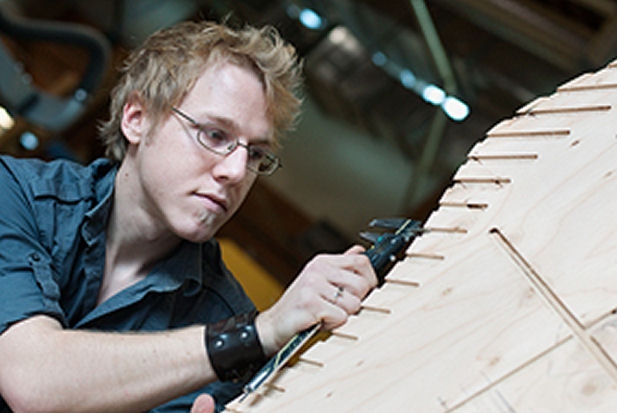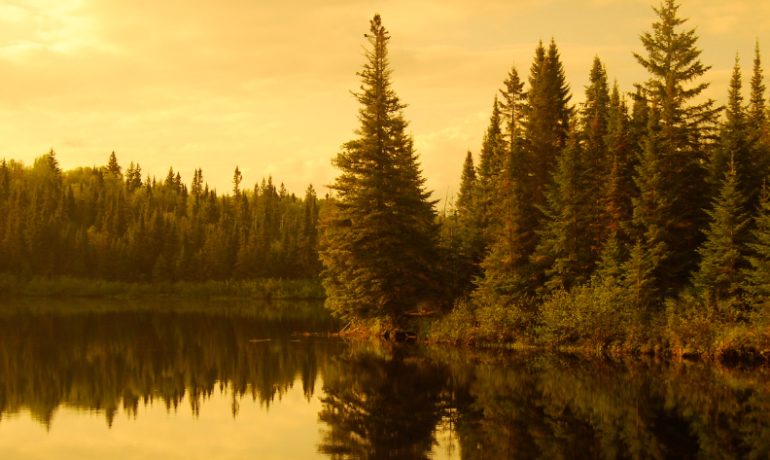Students build podiums fit for Olympians
by Heather Amos
Every athlete dreams of standing on an Olympic podium. And a group of UBC students has been scrambling to make that dream come true.
Students and staff in UBC’s Centre for Advanced Wood Processing (CAWP) were given the task of creating all 23 Olympic and Paralympic wooden medal podia and the 100 wooden medal trays for the 2010 Winter Games.
“The podia are very striking,” says Iain Macdonald, managing director of CAWP. Each one comes with a different story. The design is intended to symbolize the importance of our forests to B.C.
The provincial Ministry of Forests and VANOC approached UBC about the podium project in September.
“At first we were skeptical because the time frames were so tight,” said Macdonald. “At the time when we started to talk to them about this project, much of the wood was still standing trees.”
Twenty-three community forests from around the province donated the B.C.-grown trees for the project. Each podium is made from a unique piece of wood, including one batch of lumber harvested from a submerged forest from the Cheslatta First Nation community forest.
“It is really interesting; it’s really pushing the edge to see a new, interesting design out of local wood species,” says Andrew Pershin, a graduate from UBC’s Wood Products Processing (WPP) program.
Pershin, a Vernon native, was asked to come back to UBC to help with this project. He’s an expert with the Computer Numerical Control (CNC) machinery needed to turn podium drawings into solid structures.
As a thesis project in his last year at UBC, 2008-2009, Pershin worked with First Nations artists to see how the technology at CAWP could be used in the northwest coast sculpture market. He developed computer programs to produce sculptures that now hang in the halls of the CAWP building.
But the Olympic podia project has presented new excitement to the grad as he gets to see a project go from start to finish.
“We’ve worked with the same machinery in the lab that we used for school, and we’ve seen it utilized for the full industrial process,” he says.
The full industrial process is something the WPP program prides itself on. The students learn everything from wood science to marketing and how to set up and run a manufacturing facility.
“It really is a true interdisciplinary program,” says Simon Ellis, program director for WPP. “It’s a fusion of science, engineering and business.”
The program started in 1995 and until the recent economic downturn, 100 per cent of the students found jobs straight after graduation. In a 2005 UBC survey, grads two years out of the WPP undergraduate program had some of the highest salaries of any UBC undergraduates.
The degree program promotes project-based learning. Students get full run of a lab packed with a couple of million dollars worth of equipment and they get to experience real world scenarios. In one project students use the lab machines to produce a piece of furniture; then they develop a business model for it and decide how they would run and set up a manufacturing facility.
“The podium project is a great example of authentic learning because our students are making something that they’ll see on the world stage this month,” says Macdonald.
UBC Reports | Vol. 56 | No. 2 | Feb. 8, 2010
Related Post
Minister of Forests Mandated to Expand BC’s Community Forest Program
In the recently released mandate letter to the Minister
BCCFA Congratulates Newly Announced Three Rivers Community Forest in Quesnel, BC
The BC Community Forest Association (BCCFA) is proud to



